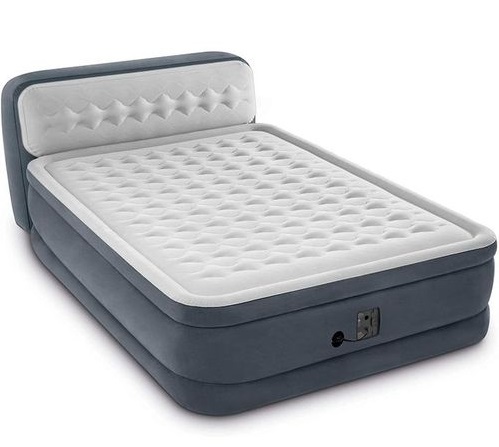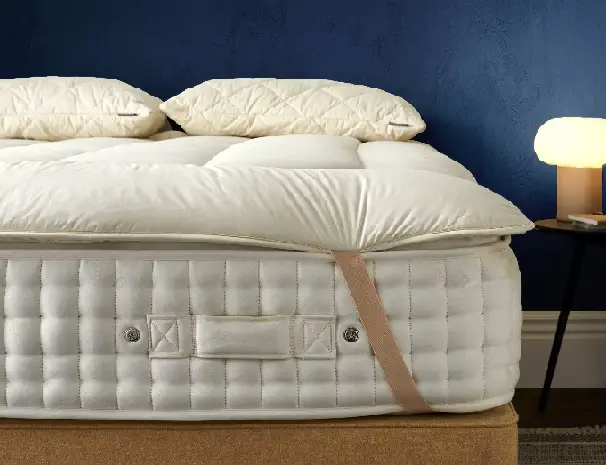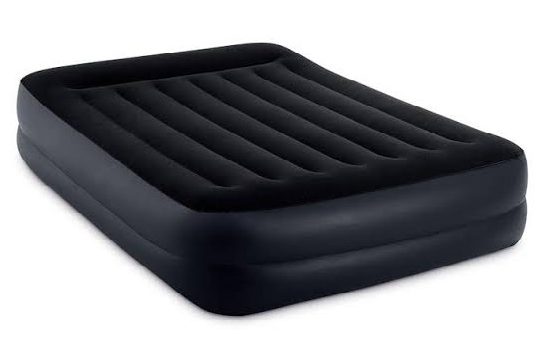Polyurethane, the primary component of air mattresses, is virtually totally water-resistant due to its imperviousness to the substance. In addition to this, they are more resistant to the growth of mold and mildew than mattresses made of foam.
In spite of this, the materials from which they are constructed are susceptible to tearing, puncturing, and other forms of damage if they are not properly maintained.
Although air mattresses are more comfortable than ever, they do have a few drawbacks. Air mattresses will gradually lose air and you will need to manually adjust the inflation level to maintain the firmness you want. For many people, this is a minor inconvenience that can be easily overlooked in favor of the comfort benefits that come with an air mattress.
There are several reasons why air mattresses will lose air with time. Here we will look at some of those reasons.
Table of Contents
1. Extreme Temperatures
When the air temperature inside the air mattress goes through extreme swings, it will cause the air mattress to lose some of its volumes. When the temperature reaches low enough inside, the air will begin to condense.
When air condenses, it shrinks down, taking up less room as a result. This will result in the air mattress becoming less firm and eventually deflating completely.
Due to the fact that PVC is impacted by heat, the air mattress’s material, which is made of PVC, will become pliable if the temperatures grow excessively high.
When the PVC reaches its soft state, it will start to leak air, which will result in the bed being less firm and more sagging.
2. Excessive Weight
Every air mattress comes with its own set of weight limits that it is designed to accommodate. The weight will also change depending on the type of material that was utilized in the production of the air mattress.
This weight-bearing capacity could also change depending on how the bed is utilized. for purposes such as sitting or sleeping on, as an illustration.
When more weight than the air bed can support is placed on it, the mattress will be subjected to an abnormally high amount of pressure, which will cause it to expand and allow air to escape.
Because of this, the mattress will soon become less supportive and eventually collapse.
3. Presence Of Leakage Or Hole
PVC material, which is used in the construction of air mattresses, is notoriously brittle and readily punctured.
If there is even a tiny hole in the air mattress, it will start to lose air very gradually, which will result in the bed becoming noticeably less firm over time.
Some air leaks in air mattresses can be mended, while others may not be repairable, in which case you will need to replace the entire air mattress. If you find yourself in the latter situation, you will need to purchase a new air mattress.
When utilizing an air mattress, it is imperative that you check the surface it will rest on to ensure there are no sharp objects or other potential threats that could puncture the material.
This article on why air mattress is not inflating and how to overcome the problem is helpful. You can use an air mattress raiser to raise the mattress off the ground. This ensures that the air mattress is well-supported and will not be punctured.
4. Over Inflating The Air Mattress
It is desirable for each air mattress to be able to resist a particular amount of air pressure. If you inflate the mattress to a higher level than these recommended values, you will be overstretching the material that was used to manufacture the air mattress, which will cause the mattress to become less stable.
At the seams, you will find the first signs of weakness, which is also where you will find the first signs of leakage. You should familiarize yourself with the manufacturer’s recommended settings and make it a point to never go above those limits.
5. Inadequate Time To Set
When you buy a new air mattress, you will need to inflate it and leave it without sleeping on it overnight. This will give the mattress time to set in place, take shape and adapt to the high pressures inside.
When you sleep on a new air mattress immediately you inflate it, it will seem to get deformed and lose firmness. This is because it is still setting in place and the air is moving to adjust to the pressures.
6. Uneven Pressure On The Air Mattress
When you apply high pressure on a localized area, it will cause the PVC material there to weaken. The weakened material may have small minute cracks that will allow air to escape from the mattress and cause it to lose its firmness.
Sitting on the edge of the bed, placing heavy objects on a small area of the bed are the culprits. Ensure you spread the weight evenly over the mattress as much as possible.
7. Damage By Pets And Children
Pets with sharp claws, such as dogs and cats, are able to readily puncture air mattresses due to their sharp claws. Insects that are not wanted, such as ants, are capable of puncturing the air mattress and causing it to leak.
Because of the bouncing nature of the air mattress, children who jump on it might potentially weaken the seams and cause tears, both of which can lead to air escaping from the mattress.
8. Improper Storage
When you purchase an air mattress, you will receive storage bags and a user handbook with instructions on how to properly store the mattress.
Do not just throw the air mattress into any old storage space because doing so may expose it to wear and tear as well as other factors that will reduce the mattress’s lifespan.
Always be sure to keep the air mattress away from direct heat, as this can cause the material that makes up the air mattress to become damaged.
How Do You Keep The Air Mattress From Losing Air?
You can take a few different actions to guarantee that the air mattress will keep its air and continue to have a level of firmness throughout the night.
If you take good care of your air mattress, you should be able to obtain a useful life service of between 8 and 10 years out of it. As the mattress ages, there is a risk of leaks occurring.
The following are some of the measures that need to be taken to make sure the air stays in the mattress.
1. Regulate The Temperatures
It is important to prevent the air inside and around the mattress from becoming extremely unstable.
When the temperature is maintained within a particular range that is specified by the manufacturer, it will ensure that the mattress does not experience tresses caused by the expanding and contracting air inside the mattress.
Use a mattress raiser or a box spring to keep the air mattress away from the cold ground.
2. Even Weight Distribution
Make sure that the weight that is being supported by the mattress is spread out over the largest possible area.
If the load is distributed uniformly across the surface, then there will be no one area that is overstretched, which will result in a reduction in the amount of damage.
3. Checking For Leakages
Be careful to give the air mattress a routine checkup so that you can address any problems as soon as they appear.
In comparison, it is far simpler to mend and patch a leak that has been discovered in its early stages as opposed to when the leak has already become significant.
In the event that the air mattress you purchased did not come with the patching kit, you will need to acquire the appropriate patching material.
4. Do Not Over-Inflate The Mattress
To prevent the mattress from becoming damaged, check that the air pressure inside the mattress remains within the limits advised by the manufacturer.
Be careful not to overfill the air mattress. If you are unable to obtain the degrees of firmness that you require, you should check for leaks that could be causing air loss.
5. Allow Material To Stretch Out
When you get a new mattress, blow it up and let it sit for a while so that it may get stretched out.
In order for the seams to properly set and stretch into their natural shapes, the chambers on the inside will require some amount of time.
At the very least for the duration of the night, you should avoid putting any weight on the inflated mattress.
6. Avoid Applying Uneven Pressure
It is best not to sit on the rims or corners of the mattress. If you have no choice but to sit on the edge, try to rotate between the various parts for a set amount of time.
This will minimize the amount of pressure that is applied to a specific area of the air bed, which will ultimately protect it from being damaged.
7. Avoid Exposing The Air Mattress To Pets And Kids
Always make it a point to keep animals that have sharp claws away from the airbed. By running and jumping on the mattress, they put unnecessary strain on the fabric, which can easily be torn.
It is important to discourage children from jumping up and down on the mattress. Use a mattress topper to help protect the air mattress from an accidental piercing.
8. Always Store The Air Mattress Safely
Always ensure that the air mattress is folded up neatly and stored in the bag provided when it is not being used.
By doing this, you can prevent the mattress from coming into contact with anything that could potentially ruin it.
Conclusion
When traveling or for use as a makeshift bed, an air mattress is a handy piece of equipment to have. Nevertheless, in order to make use of it, you will need to guarantee that the air inside the mattress will remain inflated.
There are a lot of different ways to accomplish this, but some of them are more easier to use than others. Utilizing an electric pump is one method for maintaining the inflated state of the air mattress.
People who wish to swiftly and simply inflate their mattresses without exerting any effort at all may consider going with this option.



